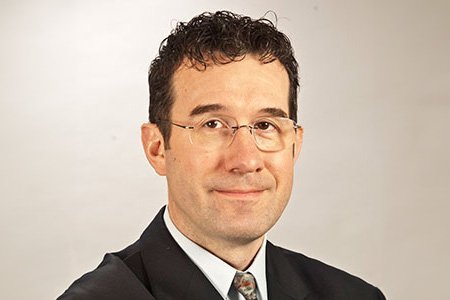Professor Dan Fabris
Professor Dan Fabris
Department of Chemistry
University of Connecticut
Abstract
Exploring the Interactions of Drug-like Ligands with Viral RNA by Native Mass Spectrometry
The COVID-19 pandemic has highlighted the ability of viral pathogens to evolve in ways that can rapidly degrade the effectiveness of the latest vaccines. It also highlighted the dearth of first-line antivirals for the urgent care of patients who might not have received the vaccine or have contracted a resistant strain. The realization of these limitations has ignited the race to develop new effective classes of antiviral drugs. In this context, native mass spectrometry (MS) could play a leading role in early drug discovery by enabling the screening of potential ligands for new viral targets and by providing valuable information on their interactions. The talk will illustrate MS-based strategies for the identification and functional investigation of drug-like molecules capable of binding to essential regulatory structures of the viral RNA. Examples will be provided in which the platform enabled the determination of stoichiometries and binding modes, as well as the evaluation of the binding affinities for selected RNA targets and the inhibitory properties of specific complexes involving such targets and cognate viral proteins. The report will also illustrate the ability of Trapped Ion Mobility Spectrometry (TIMS) MS to provide valuable insights into the effects of drug-like ligands on the stability of target RNA structures and their protein complexes, which have become the basis for ongoing structure-activity relationship (SAR) studies necessary to develop the new actual antivirals.
Dan Fabris
Dan Fabris is Professor and the Harold S. Schwenk Sr. Distinguished Chair in Chemistry. He grew up in Italy, hiking in the Dolomites, playing rugby, and studying chemistry. He received his Ph.D. from University of Padova (Italy) and was a post-doctoral fellow at the National Research Council in Padova and the University of Maryland Baltimore County. At the dawn of the field proteomics, he was involved in the development of novel approaches for protein analysis based on mass spectrometry (MS). As an independent investigator at the University of Maryland Baltimore County, his research focus shifted to the investigation of the structure- function relationships in RNA systems involved in infectious diseases. His group developed new MS approaches for the elucidation of RNA and protein-RNA complexes that were not directly amenable to X-ray crystallography or nuclear magnetic resonance (NMR). He investigated the ability of selected nucleic acid ligands to affect the structure and dynamics of the packaging signal of the genome of immunodeficiency virus type- 1 (HIV-1), which induced inhibition of essential chaperoning activities of the viral nucleocapsid protein. After moving to University at Albany to become one of the founding members of The RNA Institute, his research interests expanded to include the investigation of the effects of covalent RNA modifications of both endogenous and exogenous origin on the structure/dynamics of viral RNA. His group developed new strategies for epitranscriptomics analysis that enables the investigation of RNA post-transcriptional modification at a system level. At University of Connecticut since 2020, he is now capitalizing on these unique technologies to explore the role of the epitranscriptome in virus-host interactions and to identify new targets for the development of more effective antiviral therapies.
Hosted by Professor Varun Gadkari
